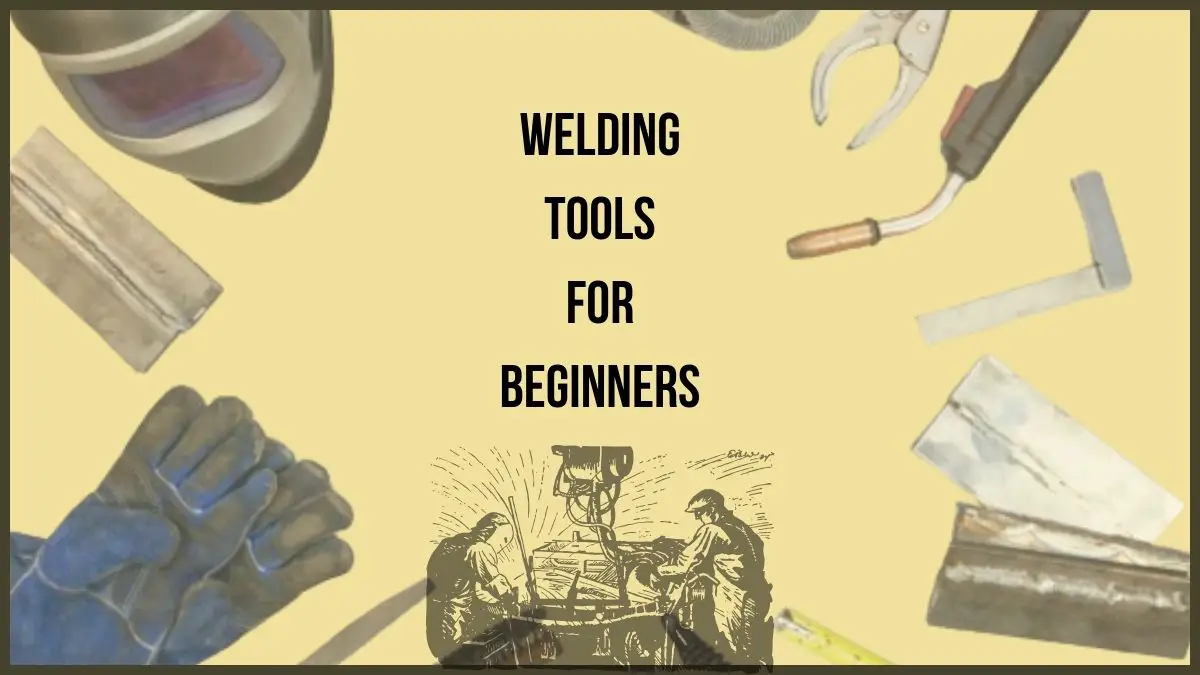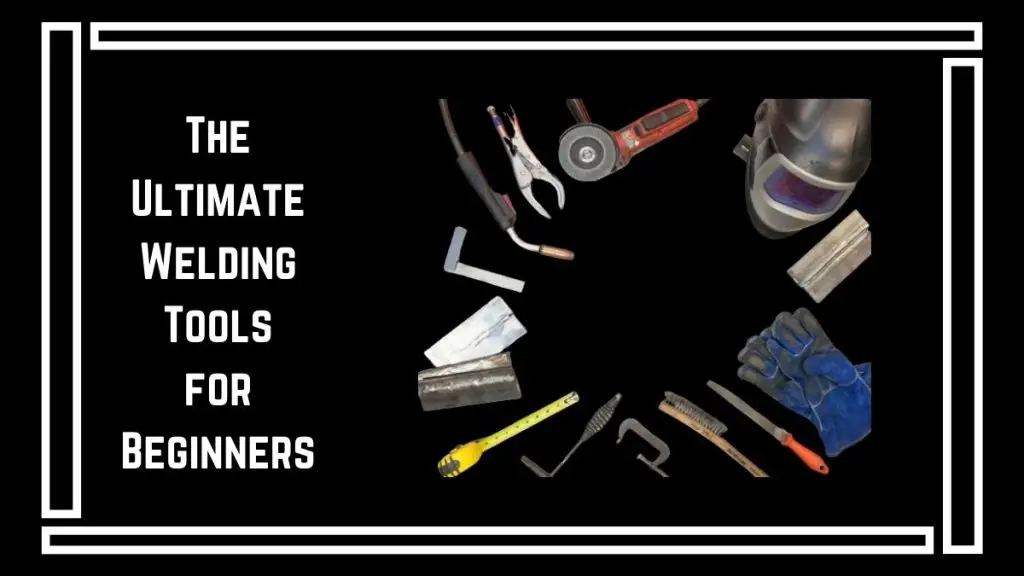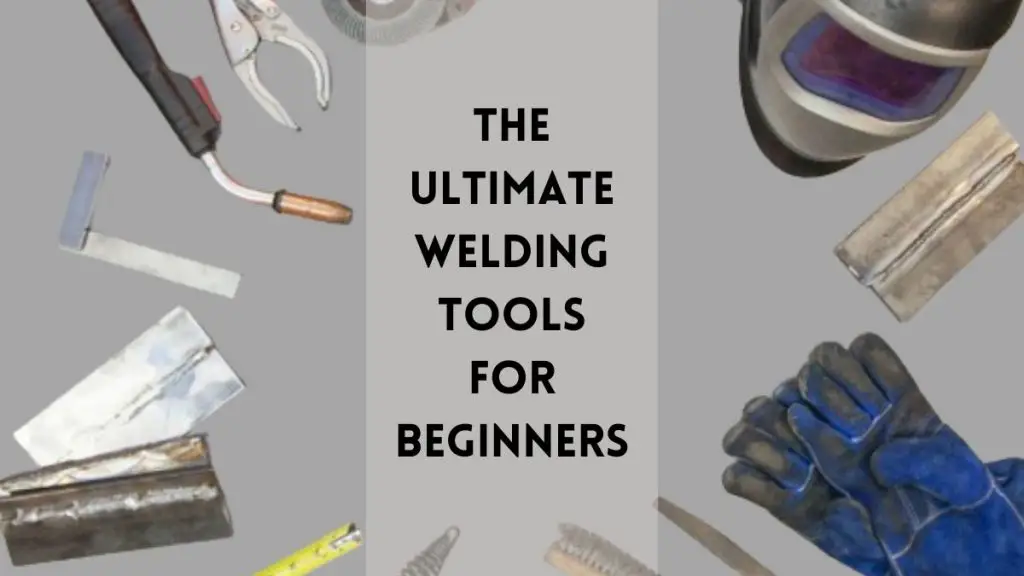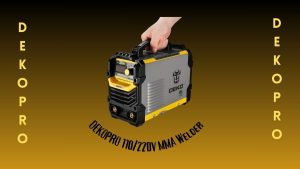
Beginner welders need basic tools such as an auto-darkening welding helmet and a MIG welder. Quality safety gear, including gloves, aprons, and other welding accessories are also essential for all types of welders. Here, we will discuss the welding tools for beginners that might be useful for welding precisely.
Embarking on the journey of welding can be both exhilarating and challenging, especially for beginners eager to master the art. The core welding toolkit should always start with personal protective equipment (PPE) to ensure safety while learning and practicing. Adequate protection from the intense light and heat generated during welding is provided by an auto-darkening helmet, which is a must-have for precision and safety.
Alongside PPE, a reliable MIG welder serves as the cornerstone for beginners, offering a more forgiving learning curve with its straightforward functionality. High-quality welding tools and accessories, such as clamps, magnets, and a sturdy workbench, lay the groundwork for effective skill-building and project execution. Starting with these fundamental tools paves the way for a fruitful and enjoyable welding experience, with a focus on developing technique and creating strong, durable welds.
Related Article: Top 20 Best Welding Tools of 2024 for Welders
You may also read: Welding Parameters: Tips for Superior Joint Quality

Related Article: Is Welding Hard? – The Ultimate Guide to Know about Welding
You may also read: The Ultimate Guide to Multi Process Welder
Essential Welding Tools And Equipment For Starters
Welcome to the dynamic world of welding! Whether it’s for home projects or a first step into a trade career, having the right tools is critical. Embarking on welding requires both knowledge and equipment. This guide will help bring beginners up to speed with the essentials.
Safety First: Protective Gear
Staying safe while welding is non-negotiable. A beginner’s safety kit should include:
- Welding Helmet: Auto-darkening helmets protect eyes from intense light.
- Protective Clothing: Flame-resistant jackets and aprons safeguard skin.
- Gloves: Heavy-duty gloves are crucial for heat and spatter protection.
- Boots: Steel-toe boots shield feet from falling objects and sparks.
- Respirator: For inhaling clean air in environments with fumes and dust.
Core Welding Machines: Types And Uses
Understanding the core machines forms the foundation of welding skills.
| Machine Type | Use |
| MIG Welder | Beginners often start with MIG due to its ease of use. |
| TIG Welder | For precision and clean welds in thin materials. |
| Stick Welder | Great for outdoor use and on rusted or dirty metals. |
| Flux-Core Welder | No gas is needed, good for thick materials. |
Complementing these machines are accessories and tools:
- Welding Magnets – To hold metals in place accurately.
- Chipping Hammer – For removing slag after welds.
- Wire Brush – To clean the weld area before and after welding.
- Angle Grinder – Essential for cutting and finishing welds.
Select quality tools for longevity and better results. Starting with the right gear sets the stage for mastering welding.
Related Article: How Do Auto-Darkening Welding Helmets Work? – A Complete Guide
Credit: www.instructables.com
Related Article: How To Choose A Welder: Expert Tips for Perfect Joining
Setting Up Your Welding Space
Setting Up Your Welding Space is a critical step for every beginner welder. It sets the stage for safety, efficiency, and comfort while working on various projects. A well-organized welding area can significantly elevate your skills and ensure a smoother workflow. Let’s dive into how you can effectively set up a welding zone fit for beginners.
Choosing The Right Location
Begin by selecting an ideal spot for your welding activities. Look for a well-ventilated area to avoid fume accumulation. Ensure the space is dry and free of clutter which could cause accidents. Concrete flooring is preferable as it is fire-resistant and easy to clean.
- Spacious: Ample room to move around.
- Accessible: It is easy to bring materials in and out.
- Electric Outlets: Ensure proper supply of equipment.
- Safety: Install smoke detectors and fire extinguishers.
Organizing Your Workspace
An organized workspace saves time and boosts project quality. Start by outlining dedicated areas for each activity. Use shelves and hooks to store tools and materials. Keep commonly used items within easy reach and label storage spaces for quick identification. Use a peg board to hang welding accessories.
| Area | Purpose |
| Main Workbench | For active welding jobs |
| Storage | For supplies and protective gear |
| Inspection | For checking completed work |
Remember to secure all cords and hoses to prevent tripping. Install adequate lighting to improve visibility. A well-lit workspace minimizes errors and enhances safety.
Basic Welding Techniques And Tips
Embarking on your welding journey can feel overwhelming, but fear not! Mastering the basics can turn any novice into a skilled artisan.
To start, you will need to understand the welding landscape. Key factors are safety, precision, and technique. Embrace these fundamentals and watch your skills flourish.
Mastering The MIG Welding Process
MIG welding stands out for its versatility and ease. Ideal for beginners, it combines speed and efficiency.
- Choose the right equipment: A MIG welder, welding wire, and shielding gas is critical.
- Prepare your workspace: Ensure it is clean, well-ventilated, and safe.
- Practice makes perfect: Begin with simple straight lines, then advance to curves and shapes.
Speed and temperature matter a lot in MIG welding. Going too fast or too slow can create poor welds. Get familiar with your welder’s settings. Aim for a consistent speed and sound.
Introduction To TIG Welding Basics
TIG welding offers precision for delicate projects. It requires a steady hand and focused attention.
- Assemble your toolset: You’ll need a TIG welder, tungsten electrode, filler rod, and argon gas.
- Get comfortable: A sturdy footing and a stable hand are essential for control.
- Control the heat: Adjust the heat to suit the metal you’re welding.
Fine-tuning your TIG welding technique comes with time. Each metal behaves differently, so patience and adaptability are your allies.
Credit: www.amazon.com
Related Article: Dekopro 110/220V mma Welder Review for Professionals
Maintenance Of Welding Tools
Welders, it’s crucial to take care of your gear. Proper maintenance extends the life of welding tools and ensures safety during use. Follow these tips to keep tools in top shape.
Regular Cleaning Routines
Keeping welding tools clean prevents issues.
- Wipe gear after use to remove debris.
- Clean nozzles and tips to avoid blockages.
- Check for spatter buildup on surfaces.
Set schedules for deep cleaning. Always use recommended cleaning solvents.
Inspection And Repair
Inspect tools regularly to catch issues early.
- Look for signs of wear and tear.
- Test electrical components for faults.
- Ensure gas hoses are intact.
Replace parts as needed. Always use manufacturer-approved spares.
| Tool Part | Check For | Action Required |
| Nozzles | Obstructions | Clean or Replace |
| Cables | Wear | Repair or Replace |
| Gas Hoses | Leaks | Replace |
Consistent maintenance ensures tools perform perfectly every time.
Related Article: Top 9 Best Welding Helmets of 2024 for Welding Safely

Related Article: The Major Welding Defects You Should Know
Advancing Your Skills With Projects
Embarking on welding projects marks a significant step in honing your craft. Practical application of your welding skills builds confidence and competence. Start with straightforward projects then progress to more challenging tasks as you improve.
Simple Projects To Begin With
Jumpstart your welding journey with projects that are manageable yet rewarding. Here’s a list to get you started:
- Steel Bookends: Perfect for practice and home use
- Fire Pit: Enhances outdoor spaces
- Wall Art: Lets your creativity shine
These projects will see you master basic welding techniques while producing functional items.
Resources For Learning And Practice
Access the right resources and enhance your skills further. Consider the following:
| Resource Type | Description | Accessibility |
| Online Tutorials | Step-by-step guides | On-demand |
| Community Classes | In-person instruction | Local workshops |
| Books | Comprehensive learning | Libraries or stores |
Pair these resources with consistent practice. Build skill and confidence with each new project.
Credit: www.amazon.com
Frequently Asked Questions On Welding Tools For Beginners
What Are Essential Welding Tools For Beginners?
Beginner welders should start with a basic helmet, welding gloves, a hammer, a set of pliers, and an angle grinder. These tools ensure safety and help with fundamental welding tasks.
How Much Does Beginner Welding Equipment Cost?
The cost for beginner welding equipment varies, but a basic setup can range from $100 to $500. This includes a welder, helmet, and basic hand tools, depending on quality and brand.
Can Welding Be Self-taught For Beginners?
Yes, welding can be self-taught using online tutorials and practice. However, formal training is recommended for better technique and safety practices.
What Materials Can A Beginner Welder Work On?
A beginner welder can work on mild steel, which is forgiving and easy to practice on. As skills improve, other materials like stainless steel and aluminum can be attempted.
TO KNOW MORE ABOUT WELDING TOOLS FOR BEGINNERS>>
Conclusion
Embarking on your welding journey has never been easier with the right tools at hand. This guide has equipped you with the essentials to begin crafting robust projects. Remember to practice safety first and refine your skills progressively. Dive into the world of welding and unleash your creative potential today.
Happy welding!
Related Article: Top 7 Best MIG Welders of 2024 for Precise Welding
Related Article: The 9 Best TIG Welders of 2024 for Welding Efficiently






8 thoughts on “The Ultimate Welding Tools for Beginners”